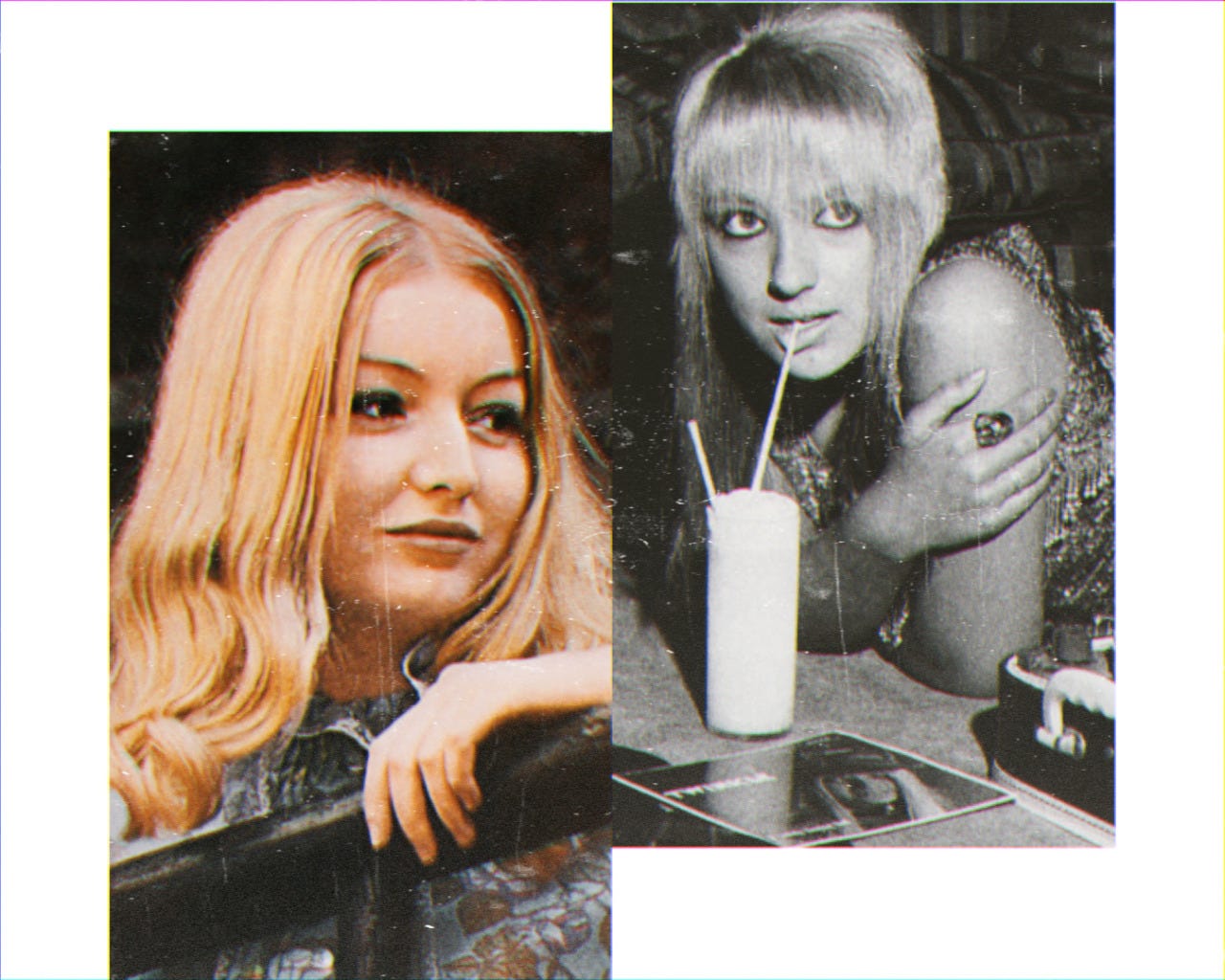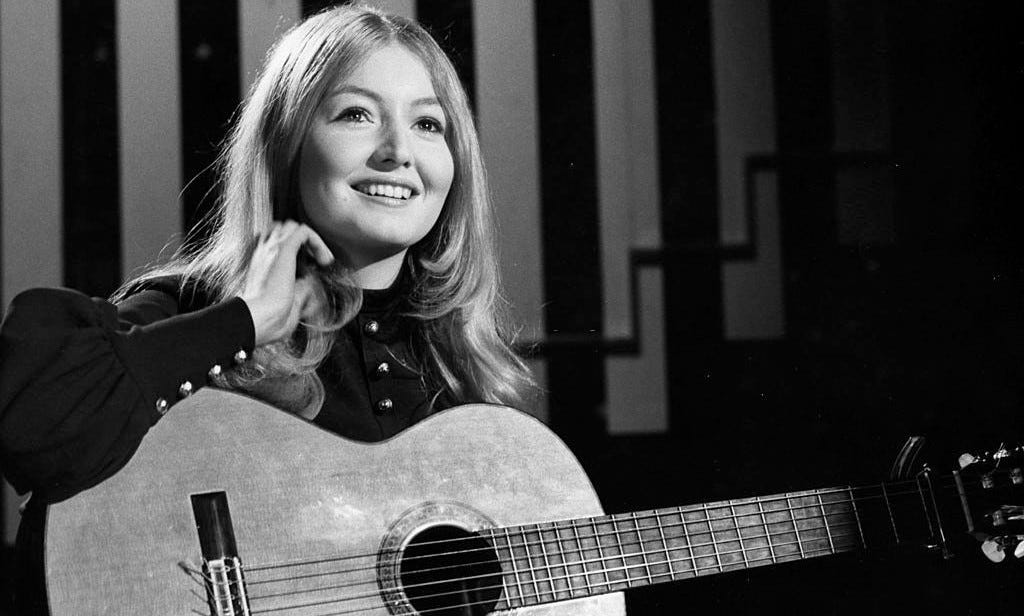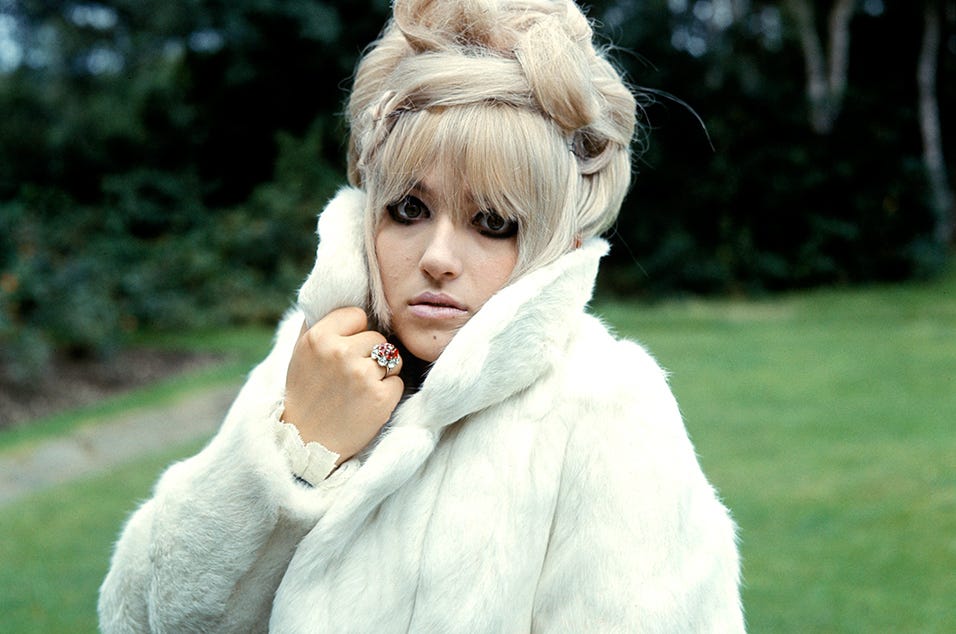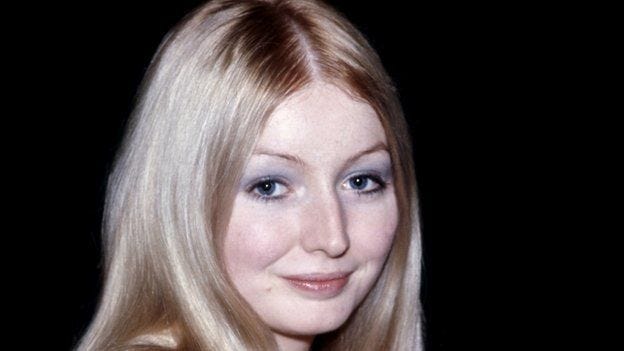(via facebook.com)
Two months ago, English music legend Marianne Faithfull passed away at age 78. I’ve been a fan of Marianne’s music and fascinated by her personal life since I was in college, and was both surprised and unsurprised at her death; since she’s a survivor who had previously beat drug addiction, emphysema, COVID-19 and pneumonia, to name a few of her battles. But as I was being reminded of all her great accomplishments last month, I also started to think about the other female singers from the 1960s, specifically the British Invasion, who I enjoyed when I was younger too. Two names that haven’t crossed my mind in years are Mary Hopkin and Twinkle. Though not exactly superstars outside of the UK, anyone interested in the country’s music industry in the mid-20th century would recognize their names and singles. Like Marianne, the two fellow blondes began their careers as teenagers who were marketed primarily to young listeners. As a Beatles fanatic, I know of Mary through her work with Paul McCartney and Apple Corps. With Twinkle, I would consistently see her name pop up in articles and books I read on the British Invasion. The latter, born Lynn Annette Ripley, came from a posh family and was raised in the affluent suburbs of Surbiton, England, while the former had a more modest, working class background growing up in a small Welsh town called Pontardawe.
(Chris Ware)
Both young ladies got their big break not too differently. Twinkle—whose appropriately adolescent stage name was initially a childhood nickname—began performing and even writing her own songs for fun when she was 15 in 1963. A year later, her older sister, magazine columnist Dawn James, introduced her to her first serious boyfriend, Dec Cluskey of the pop group the Bachelors. It was Dec who then sent one of his band’s producers, Tommy Scott, a demo Twinkle had recorded before she was quickly signed to Decca Records. Mary on the other end, was happily performing at local recitals and talent shows until she won the chance to appear on the popular ITV variety program “Opportunity Knocks” in May 1968, only two days after turning 18. During her episode she sang Pete Seeger’s ‘Turn! Turn! Turn!,’ which apparently impressed supermodel Twiggy so much she immediately recommended Mary to Paul. By the end of summer, Mary was one of the first music artists signed to the Beatles’ record label Apple Corps along with the pop-rock band Badfinger and singer-songwriter Jackie Lomax. Unlike the usual teen popstars back then, Mary was akin to folk icons Joan Baez and Judy Collins, who were also famous for their interpretations of traditional tunes. Whereas Twinkle was more of a proto-Debbie Gibson, in that she was actually pretty active in the song-making process as much as she was singing despite being so young.
Her first official single, ‘Terry,’ was a part of the ‘60s wave of ‘teenage tragedy song’s which were usually overly dramatic ballads where a female singer or girl group lament the tragic end of a rebellious boy they love. ‘Terry’ gets compared a lot to ‘Leader of the Pack’ by the Shangri-las, which predated Twinkle’s song by a couple months in 1964. Even though ‘Terry’ caused controversy for transparently being about the accidental death of the song narrator’s boyfriend, the song was a hit and Twinkle managed to rise to stardom in her home country. For the next two years, the starlet and Tommy would record a dozen songs together, which were a mix of originals by either Twinkle or Tommy, as well as covers. Her second single, ‘Golden Lights’ from spring 1965, amusingly already shows signs of the vocalist getting burnt out by fame as she vents about the break-up between her and Dec. After their separation, Twinkle dated Peter Noone of Herman’s Hermits for a bit in ’65 too. Though ‘Terry’ is her trademark song, I’ve always preferred ‘Tommy’ (1965), which is a bit more upbeat and less morbid lyrically [and actually not related to Twinkle’s musical partner, despite the same name]. I also like ‘I Need Your Hand in Mine’ and her cover of Skeeter Davis’ ‘The End of the World.’ I think what’s most impressive about Twinkle’s success is that she hit the charts and developed a whole fanbase without a full album released. The closest she got was the EP ‘A Lonely Singing Doll’ released in May 1965, which features a memorable English language cover of France Gall’s ‘Poupée de cire, poupée de son’ as the title track.
(Popperfoto)
Similar to Twinkle and Tommy, Mary and Paul worked closely together with a mentor-protégé dynamic. Here, Mary was originally fine with Paul organizing which songs she should record and perform live for her debut LP, ‘Post Card,’ released in February 1969. While Twinkle and Decca embraced the teen’s wild child reputation and marketed her as a bad girl, Mary was the innocent good girl who looked pretty while sitting and strumming an acoustic guitar, rather than bouncing around on stage. In fact, no one was more surprised than Mary when her first single, ‘Those Were the Days,’ an English language cover of an old Russian folk song called ‘Dorogoi dlinnoyu,’ went no. 1 worldwide in September 1968 during the era of teen pop and hard rock. Interestingly, the hit isn’t included on ‘Post Card’ despite fitting in with the rest of the album, which includes pop, folk and even some showtunes. My favorite is ‘The Puppy Song’ penned by Beatle pal Harry Nilsson, and I’m fond of Mary’s rendition of George Gershwin’s ‘Someone to Watch Over Me.’ The closing track, a slowed down, ballad arrangement of Irving Berlin’s ‘There’s No Business Like Showbusiness’ also gave me a new appreciation of the iconic number. Although Mary herself insists there was no ill will toward each other at the time, the star and Paul did disagree on her public image. As her producer, the bassist was naturally hoping Mary would become the next big pop girl. But like most ladies in entertainment, Mary found her virginal image boring and restrictive. Her second single, ‘Goodbye’ in March 1969, was written and produced by Paul again, with some interpreting the song as him letting Mary go on and lead her career without his guidance. Fittingly, the setlist for her first tour included a nice, soft version of the Beatles’ classic ‘In My Life,’ showing appreciation for her mentor. Her next album, ‘Earth Song/Ocean Song’ (1971), was produced by successful American engineer-producer Tony Visconti—whom Mary would also wed and start a family with not long after the record.
(Monitor Picture Library)
So with all this build-up, what are the official reasons Mary’s and Twinkle’s stardoms were so short-lived despite having the keys to success? For Twinkle, it’s a couple of things. After breaking through for two years in 1964-66, she discovered being a celebrity can easily feel like a drag. She also later admitted she lazily didn’t make managing her money a big priority, since she grew up comfortably, and ended up spending too much, too fast. After Decca let her go following the release of her sixth single, ‘What am I Doing Here with You?’ (1966), Twinkle just returned to her family by the time she was 18. She eventually married former model Graham Rogers in 1972 and conceived two children with him, Amber and Michael. A year after the wedding, Twinkle wrote and recorded a whole record of original songs which was ultimately abandoned before resurfacing and getting released three decades later in 2003 under the title ‘Michael Hannah.’ The title track is inspired by the songstress’ last boyfriend before marrying Graham, who encouraged her to get back into music. Michael was sadly killed in a plane crash in 1974 after Twinkle recorded the LP. Twinkle and Graham remained together until the singer-songwriter’s own death from cancer at age 66 in 2015.
(via wordpress.com)
Though Mary was respected by peers and critics, she also claims she didn’t get along with her manager, Terry Doran, on top of disliking the direction her aesthetic went. After ‘ES/OS’ was released and she completed the promotional tour, Mary tried switching labels which resulted in various new recordings being shelved until she decided to put aside music at 22 to focus on raising her kids, Morgan [b. 1972] and Jessica [b. 1976], with Tony. Her singing contributions throughout the 1970s would primarily be accompanying background vocals on records produced by Tony until their divorce in 1981. A fave fun fact of mine is that the female singer heard on Rachael’s Theme during the soundtrack of Ridley Scott’s cult classic Blade Runner (1982) is actually Mary. Like Michael did with Twinkle, Jessica encouraged her mother to revisit music and even experiment with songwriting. This resulted in the 1989 album ‘Spirit’ and archival releases of demos/outtakes from the ‘70s and ‘80s called ‘Valentine’ (2007), ‘Recollections’ (2008) and ‘Now and Then’ (2009). Since then, Mary has been regularly active and collaborates with both grown children on new material.
What’s great is that neither songstresses will probably ever be forgotten in pop culture history. Mary and her most famous record are directly connected to the Beatles, and ‘Golden Lights’ was covered by legendary rock band the Smiths in 1986, as frontman Morrissey refers to himself as a longtime fan of Twinkle. Sometimes a death like Marianne Faithfull’s can make fans feel sad, but it can also bring back memories forgotten about, such as appreciating two underrated female musicians.








